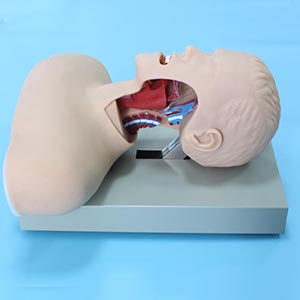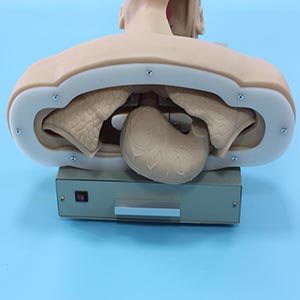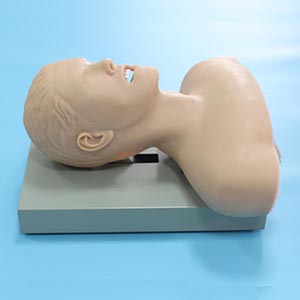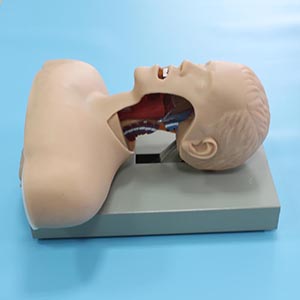

Article tag: Advanced Tracheal Intubation Training Model| BIX-J51|
Endotracheal intubation is a life-related emergency medical skill, especially in the process of first aid plays a vital role. However, the high difficulty and complexity of tracheal intubation technology often make medical personnel face certain challenges in practice. Traditional training methods, including mannequins and hands-on practices, often fail t...
Endotracheal intubation is a life-related emergency medical skill, especially in the process of first aid plays a vital role. However, the high difficulty and complexity of tracheal intubation technology often make medical personnel face certain challenges in practice. Traditional training methods, including mannequins and hands-on practices, often fail to provide adequate real-time feedback and precise guidance. So, can ** Advanced Tracheal intubation training model ** change this situation and become a key tool to improve intubation skills?

Traditional intubation training often relies on real people or low-precision simulation models, but these models do not provide enough feedback, making it difficult for students to detect and correct their own errors. According to a study in the Journal of Emergency Medical Services, trainees in traditional training generally have a low success rate in tracheal intubation procedures, and many trainees face challenges in practical application, ** catheterization failure rates can be as high as 25%-30%** (Smith et al., 2019).
These problems reflect the limitations of traditional training methods. So, can ** advanced tracheal intubation training model ** break through these bottlenecks and provide more help for first aid training?
** Advanced Tracheal intubation Training Model ** Uses advanced sensor technology and computer algorithms to provide real-time feedback on key indicators such as intubation depth, Angle, speed and airway position. This real-time feedback can help students quickly identify errors and make adjustments, which can greatly improve the accuracy of operations.
According to an experiment in the Journal of Resuscitation, emergency personnel trained with advanced simulation models have a higher success rate of intubation than those trained with traditional Resuscitation (Jones et al., 2021). Through this precise training, students can more confidently perform intubation in high-pressure environments, minimizing clinical intubation failures.
In addition, the advanced tracheal intubation training model can simulate different emergency situations, including changes in airway anatomy and various difficulties during intubation (such as airway obstruction, laryngeal edema, etc.). This diverse training scenario enables students to cope with various emergencies in a changing environment and further improve their practical operation ability.

Advanced tracheal intubation training model
Although the initial investment of the advanced tracheal intubation training model is high, the training benefits are very significant in the long run. Traditional tracheal intubation training often relies on human simulators or professional instructors, which not only requires a lot of time and resources, but also may face the problem of low frequency and uneven quality of training.
The use of advanced simulated human equipment enables each student to train repeatedly in a simulated environment until they master the technical essentials, significantly improving the efficiency and quality of training. According to an analysis in Medical Education, the use of advanced simulation models resulted in a **40% faster improvement in technical proficiency (Taylor et al., 2020).
In addition, the reusable nature of the simulator also makes it possible to reduce the cost of each training in multiple trainings. One device can be used for multiple training courses, and as the number of trainees increases, the training cost per unit of trainees will gradually decrease. This is a cost-effective investment for first aid training institutions.
While there are many advanced tracheal intubation training models on the market, it is critical to choose a device that suits your needs. Industry personnel should focus on the following points when choosing equipment:

Tracheal intubation training model
1. ** Functionality and simulation accuracy ** : Whether the simulation function of the device is comprehensive enough and whether it can cope with various difficult situations of tracheal intubation (such as airway obstruction, laryngeal edema, etc.).
2. ** Real-time feedback system ** : Whether it is equipped with accurate sensors and feedback systems to monitor each link of the student's operation in real time and provide accurate adjustment suggestions.
3. ** Scalability and versatility ** : With the advancement of first aid technology, can the tracheal intubation training model be upgraded with the latest training standards and technologies to provide more training scenarios and personalized customization?
4. Cost-effective: Although the initial investment is large, the long-term use of equipment and efficient training will bring more economic benefits to first aid training units.

** Advanced Tracheal Intubation training model ** With its high precision, high imitation and intelligent feedback, is gradually changing the traditional way of first aid training. By providing real-time feedback, simulating complex situations, and improving the success rate of intubation, it provides more accurate and efficient training for emergency personnel. For first aid training institutions and medical institutions, investing in such high-end training equipment will undoubtedly be an important step to improve the quality of training, reduce emergency operation errors, and improve patient survival rates.
From the data and application effect, the advanced tracheal intubation training model can not only improve the students' technical mastery, but also significantly improve the operation success rate in actual first aid. Whether to choose this technologically advanced, accurate feedback training method may be the key to the future development of the first aid training industry.